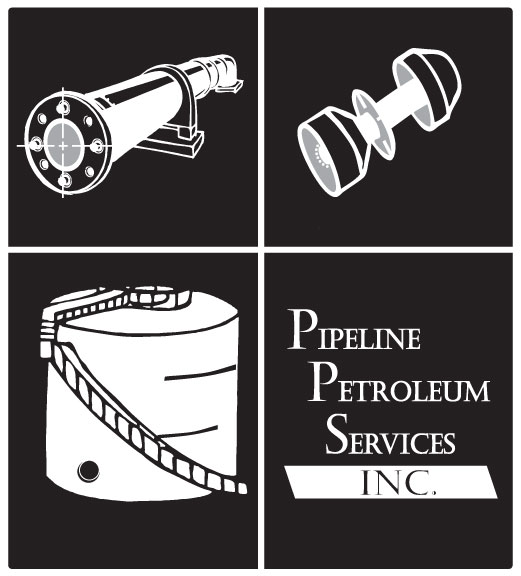- You are here:
- Home »
- Pipeline Pressure Testing & Inspections
Pipeline Pressure Testing & Inspections
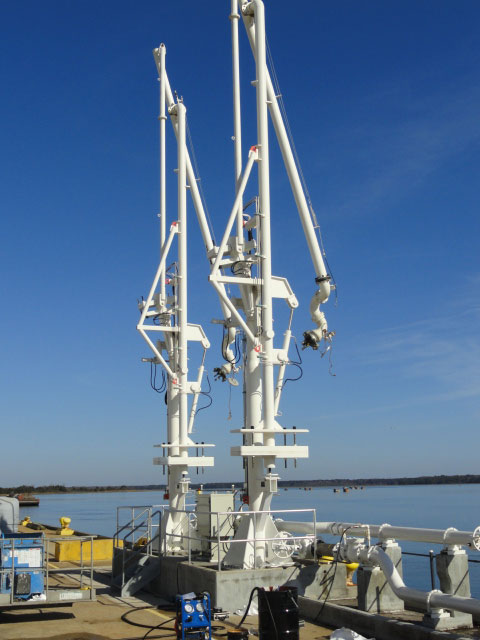
Typical loading arm testing with water.
A highly specialized service provided by PPSI is pipeline hydrostatic pressure testing. Pressure testing verifies the structural integrity and strength of a pipeline by verifying its ability to withstand higher than normal pressures without deformation, damage, or failure. This form of integrity testing is required by industry regulations and could involve scheduled compliance, emergency response for a suspected pipeline leak, qualify a higher MOP, or re-qualifying newly repaired or constructed pipelines. Testing services are for pipelines, loading arms, truck racks, hot pits, tanks, and secondary containments.
Government environmental protection regulations are forcing facilities with petroleum or other products that are hazardous to the environment to have their product pipelines pressure tested periodically. Marine pipelines, station piping, intrastate, & interstate pipelines are regulated by different Government agencies depending on jurisdiction. Our state of the art data collection equipment is accurate to .05% of full scale range, is well maintained, and third party calibrated annually to ensure accurate data collection.
Unlike some of our competitors, we do not take a “quantity of tests performed in a day” over “quality of each test" approach to hydrostatic testing. Our methodology to testing includes performing pre-test calculations on line fill, test volume, %SMYS of the pipe, and detection of air entrapment, as well as, performing a complete visual inspection of every component in the test section and documenting even minor deficiencies such as corrosion, metal loss, and coating failures. Complete and accurate testing reports (In a proprietary format) with full documentation including validation calculations verifying volume change and temperature compensated pressure gain / loss is provided, as well as recommendations on correcting deficiencies are presented to the pipeline owner after the testing. The validation calculations take variables such as pipe material, pipe location, product, and weather and uses the physical characteristics of each in a complex set of calculations to certify pressure / volume increases and decreases are within acceptable limits. If a line cannot pass a test, we will make all available corrections to achieve a satisfactory result before declaring the line a “failure”. This temperature compensated calculation method is an absolute must when underground or inaccessible piping is involved where a simple visual inspection for active leaks cannot be completed.
A major advantage of utilizing hydrostatic strength testing over NWGLDE certified leak detection testing is cost per test. If a standard hydrotest is declared a failure, a third-party certified precision leak test can be used to verify the failure saving money on all tests that were declared as successful. In addition, despite claims to the contrary, all leak detection testing is affected to some degree by temperature fluctuations and the sensitivity of the tests decreases as the pipeline test section volume increases.
Our personnel are DOT qualified (By written NCCER exam) and have the knowledge of the regulations and industry standards to ensure the client will remain in compliance. Our DOT OQ qualifications and safety records can be found on the ISNET web site. (www.isnetworld.com). Our Drug & Alcohol programs are third-party administered and can be reviewed at the NCMS website. (www.nationalcompliance.com) PPSI is certified in the State of California to perform pipeline hydrostatic pressure testing and that listing can be found on the State Lands Commission Website: http://osfm.fire.ca.gov/pipeline/pipeline_hydrotest
Testing and Inspection Services Performed Include:
- Deadweight verified hydrostatic (water) and hydraulic (fuel) pressure testing of liquid petroleum lines, natural gas pipelines, water lines, loading arms, and many other types of piping systems.
- Turn-key line filling, dewatering, and drying to negative dew point by pigging including installation of temporary pumps, filters, frac tanks, and associated equipment.
- Temperature compensated & volumetric testing.
- Low & high pressure test curves. Extreme low pressure pneumatic testing for secondary containment systems and tanks. High pressure testing of systems such as natural gas lines up to 3000 psi.
- Pressure relief valve maintenance & calibration.
- Pressure indicator & transmitter calibration.
- Pressure testing of marine transfer hoses and loading arms.
- Contact water options including onsite treatment and discharge or offsite disposal.
- Helium leak detection of tanks, pipelines, and secondary containment spaces. (This service can be performed in conjunction with pneumatic pressure testing to locate the source of any suspected leaks.)
- API-580 Risk Based Assessments & API–570 Inspection recommendation and coordination.
- Recommendation and coordination of NWGLDE certified third-party leak detection testing or tracer testing.
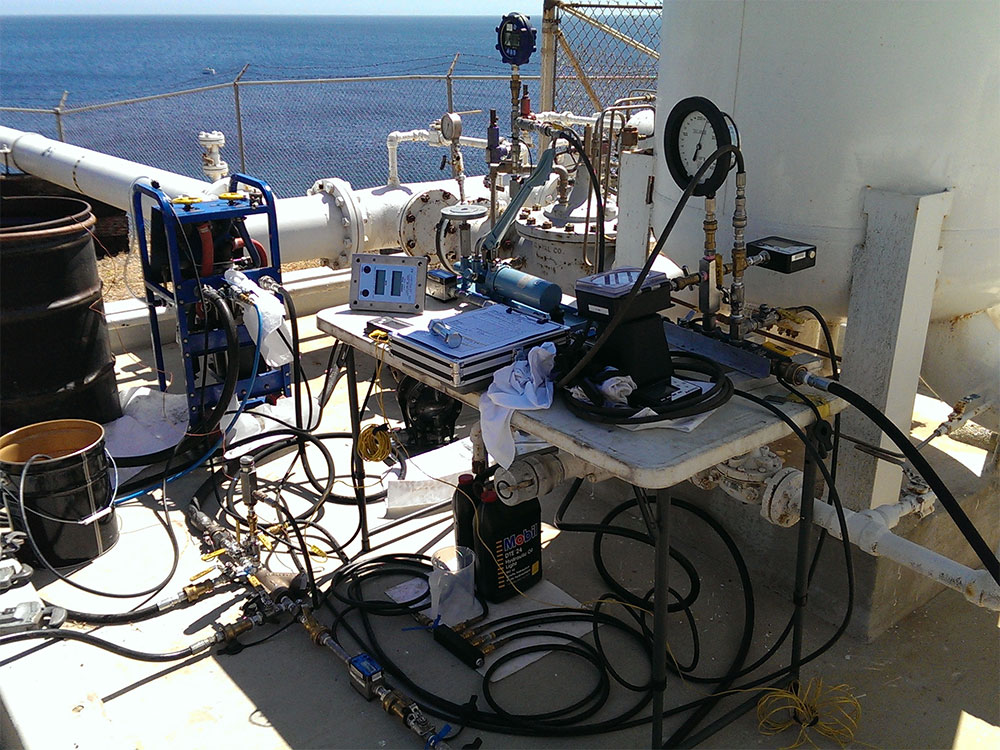
Typical hydrotest setup including pressure / temperature recording instruments, stroke counters, relief valves, flow meters, deadweights, and associated manifolds and hoses.
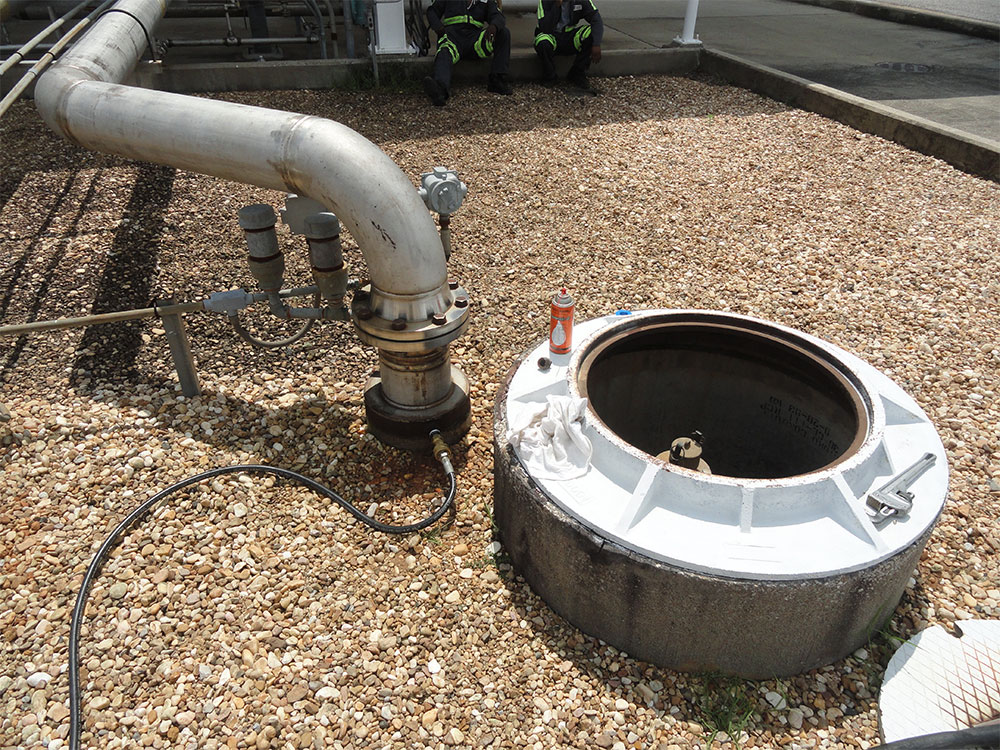
Low pressure testing of a secondary containment interstitial space.
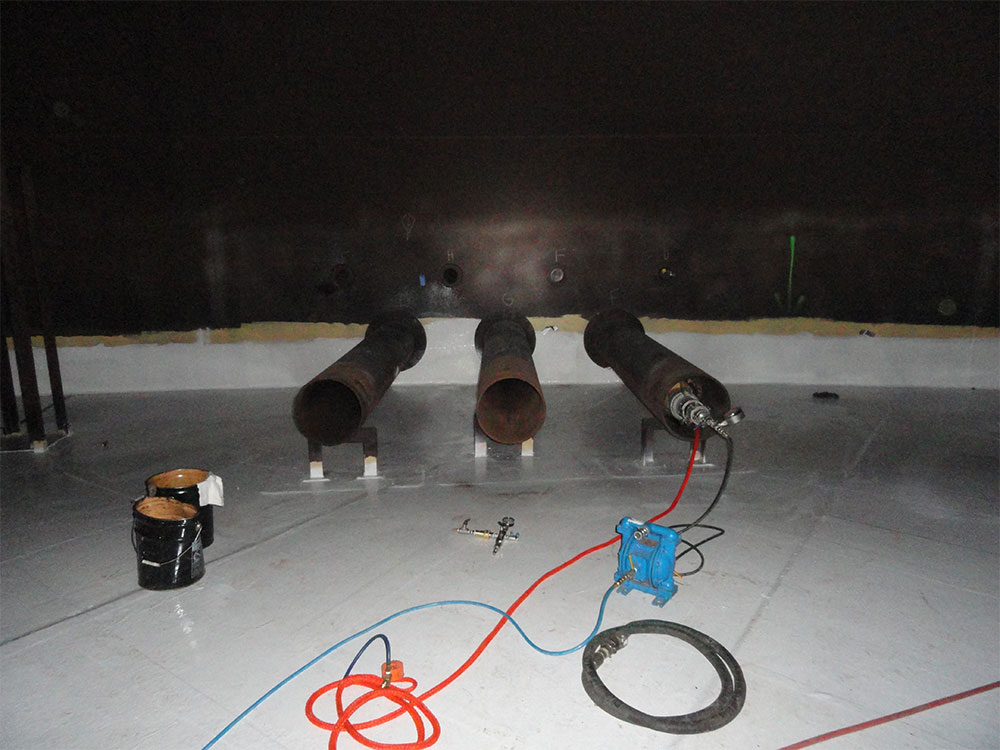
Low pressure testing of tank nozzles from inside a fuel tank.
Our comprehensive 100% visual inspection of aboveground portions of piping that is performed with every hydrotest has found the following pipeline anomalies, some of which were found and corrected before a hydrotest was even performed.
Example 1: DBB located on pier at DFSP Puget Sound
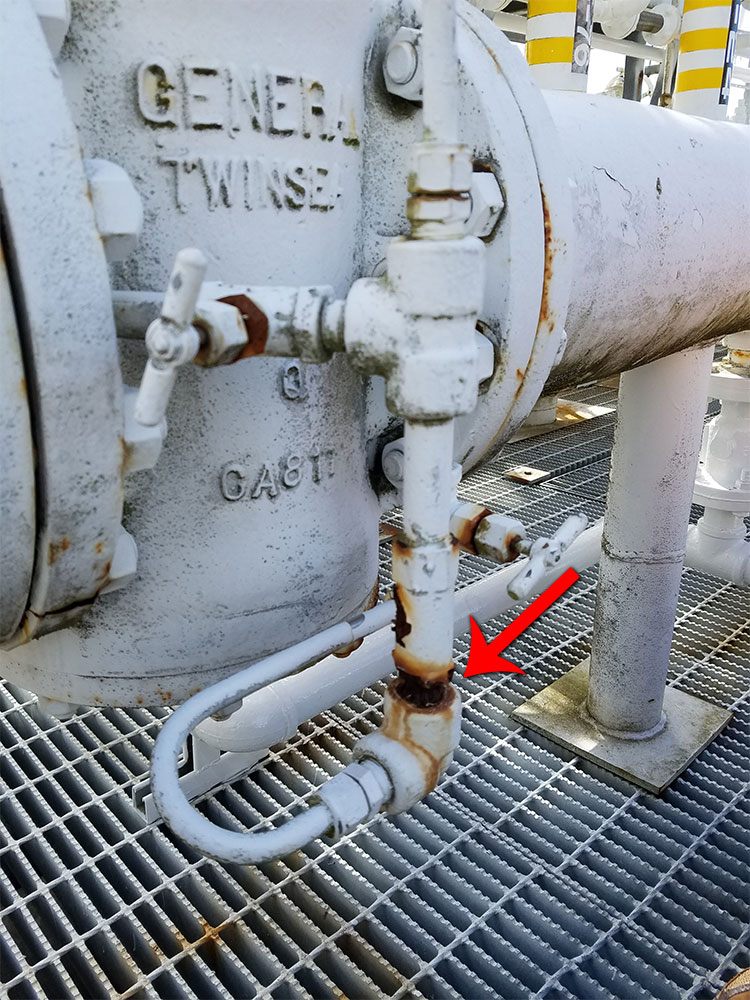
A corroded DTR fitting was discovered on this DBB valve prior to a hydrotest and was replaced.
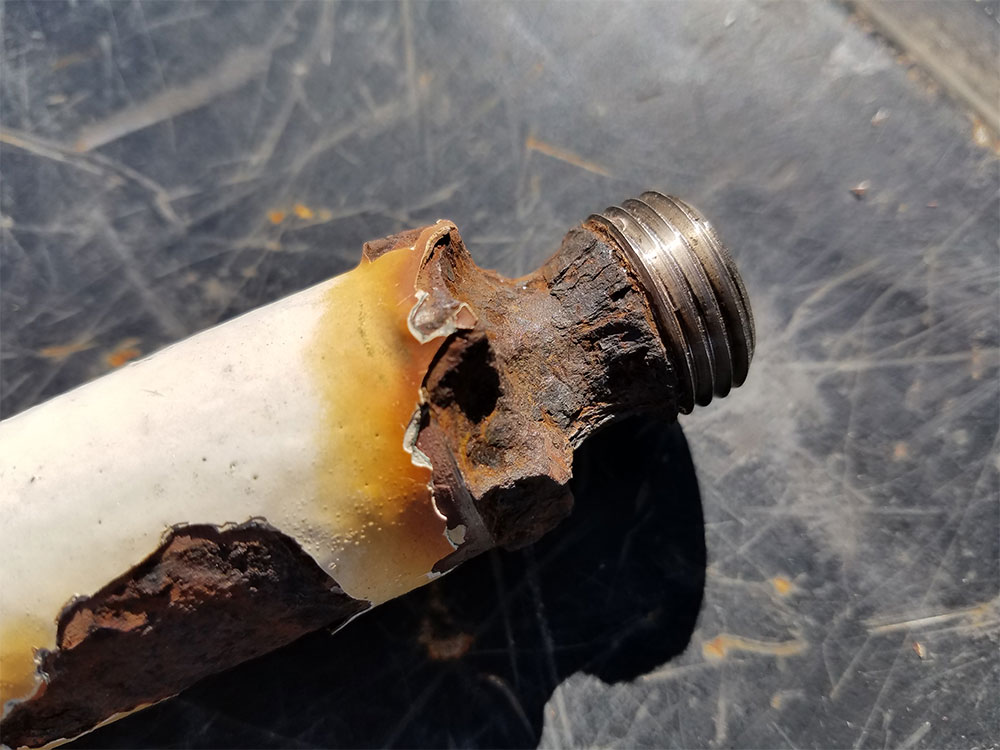
DTR fitting was severely corroded and presented a possible rupture and leak risk.
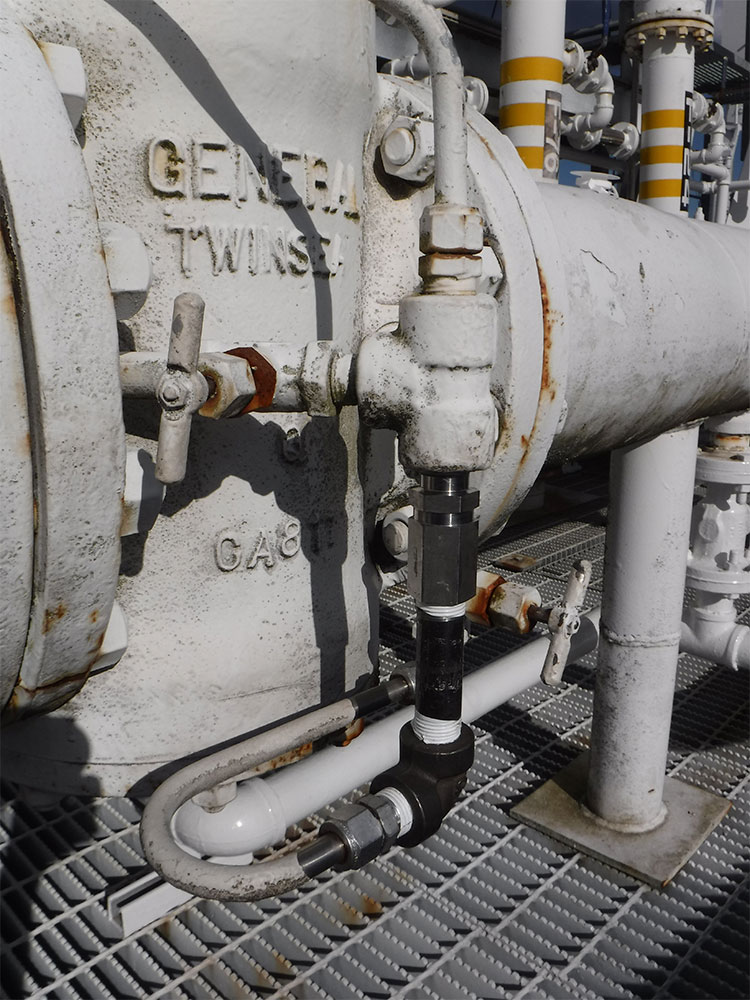
DTR fitting after replacement.
Example 2: DBB located at Naval Station Pearl Harbor
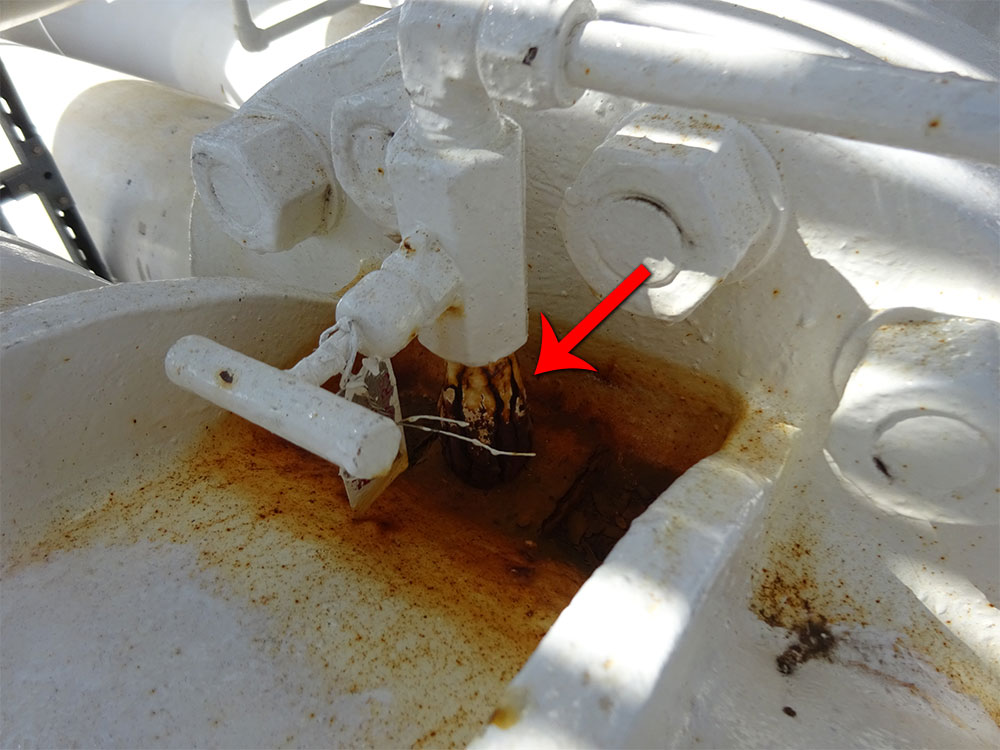
Another DBB relief fitting was discovered prior to testing.
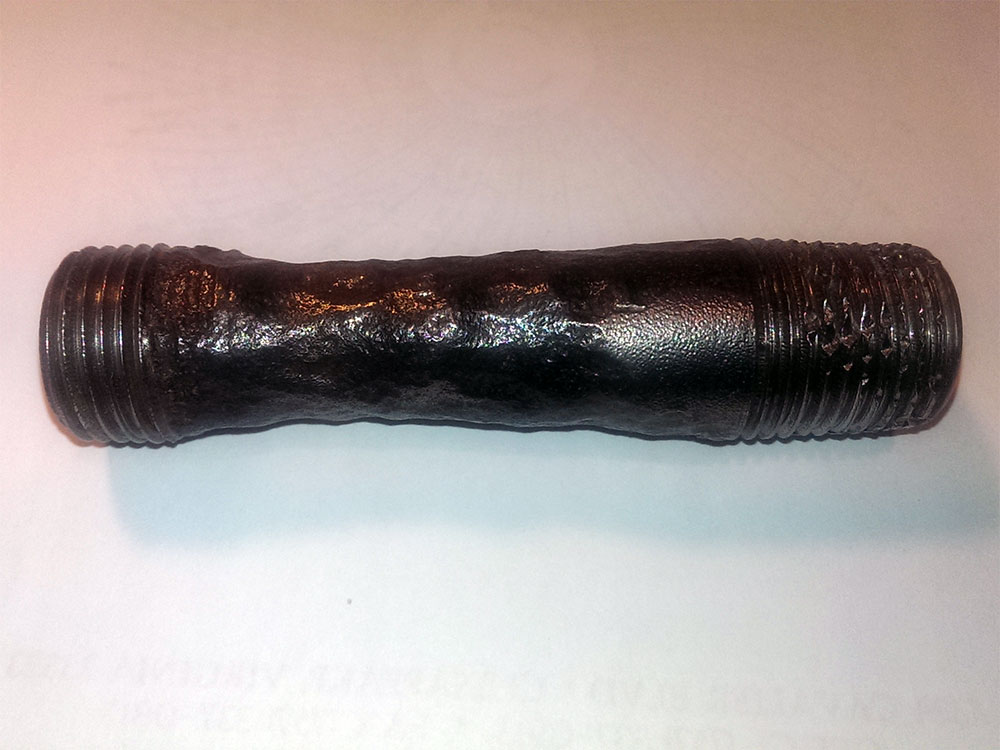
The relief fitting that was identified in the previous photo was a CS nipple with severe wall loss due to collecting rainwater in the valve body.
Example 3: DBB located at Naval Station Pearl Harbor
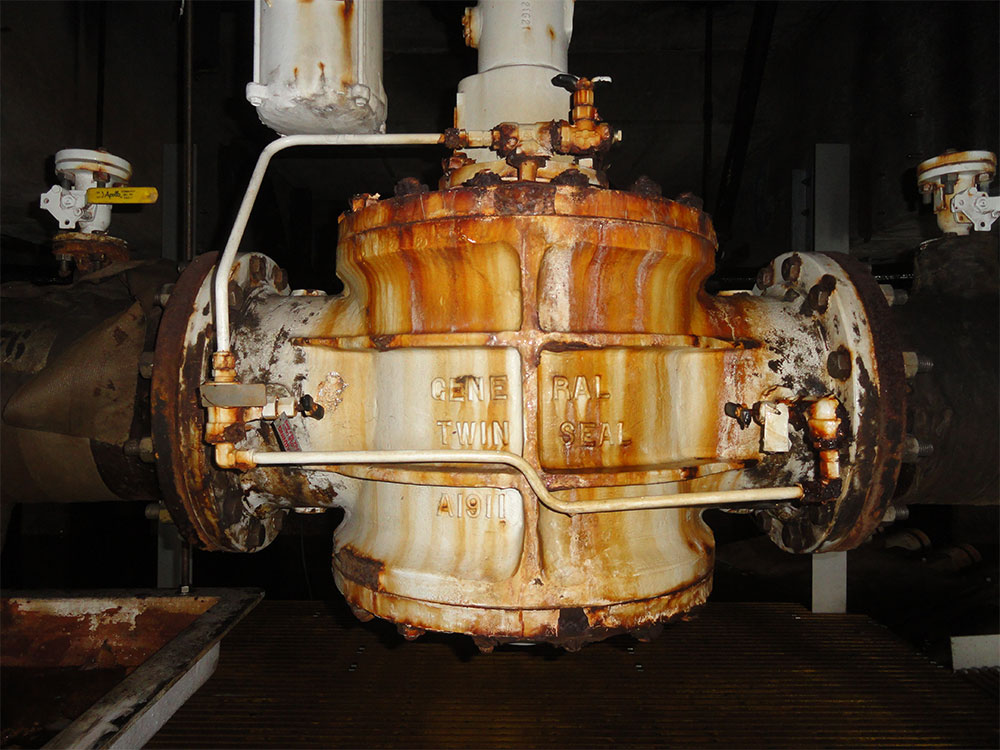
Severe corrosion and degradation of structural fasteners was discovered on this DBB valve located under a pier prior to a hydrotest.
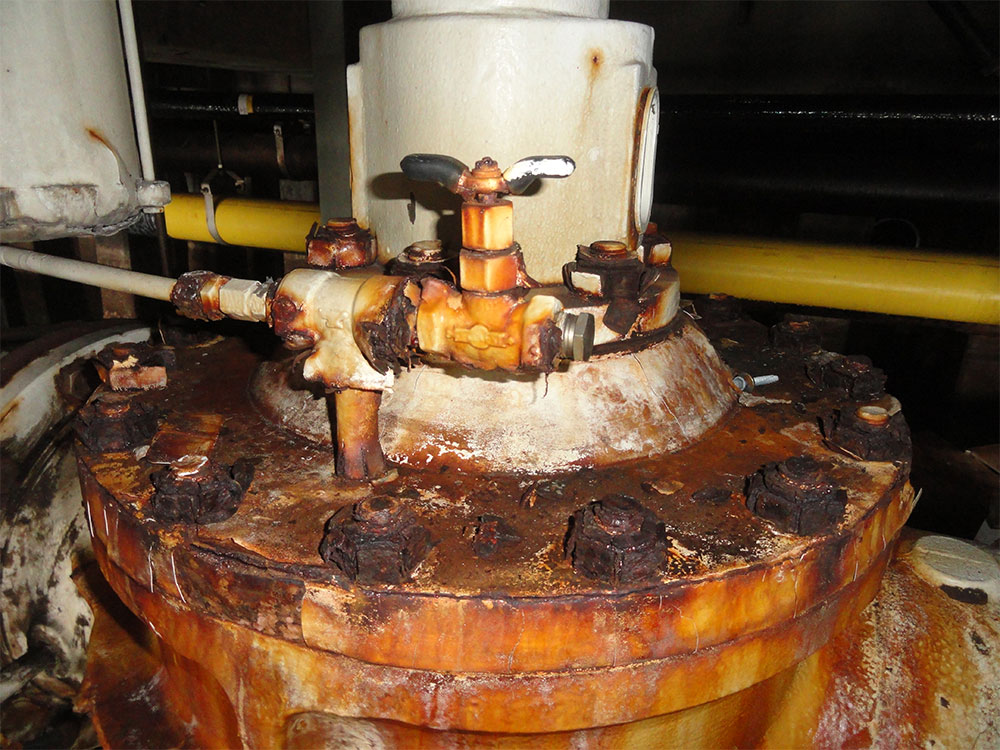
Testing was stopped and the valve was repaired preventing a possible spill.
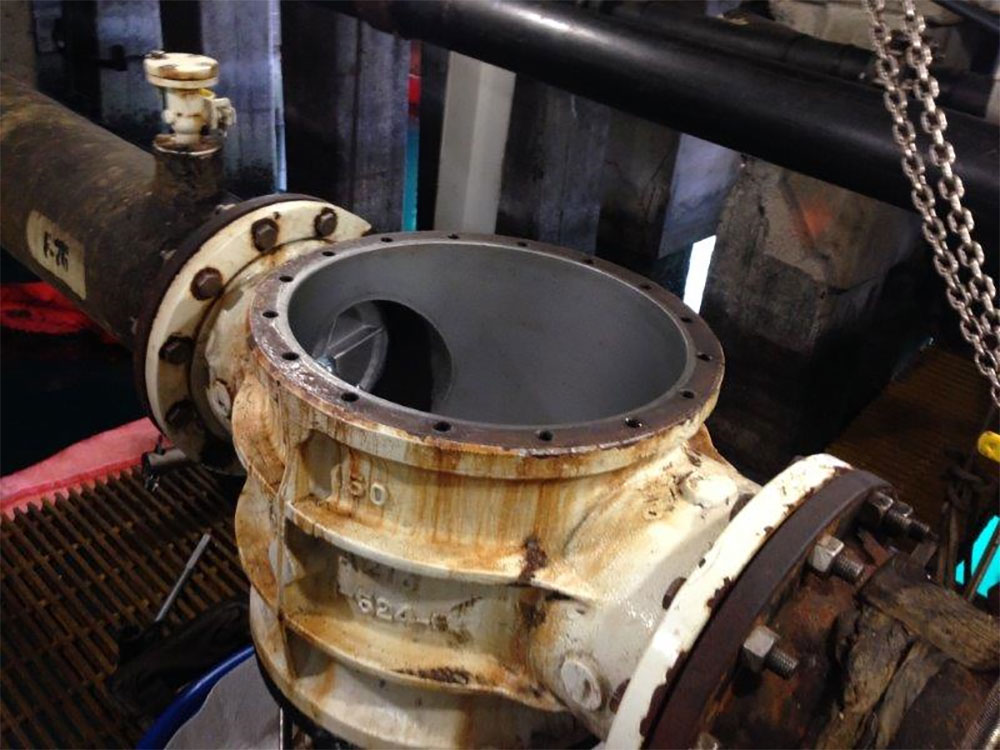
Valve shown above after corroded bolts were removed and the valve bonnet was lifted from the valve body.
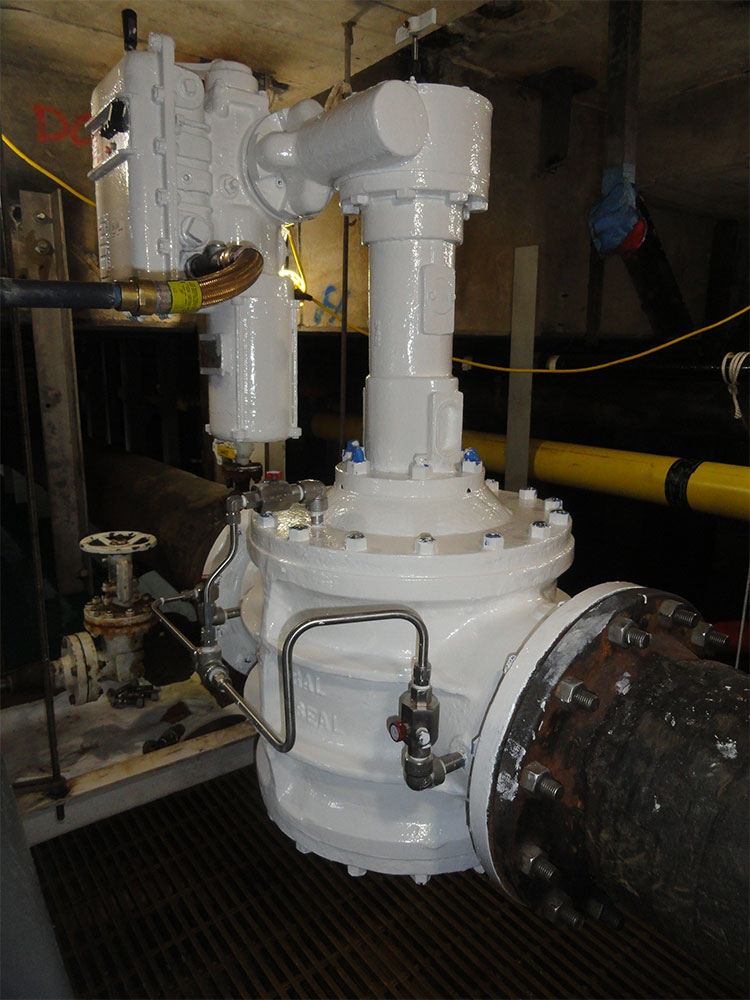
DBB valve after restoration.
Examples of active leaks and failures found during a controlled hydrostatic test. These leaks could have been much larger in scale had they happened during normal operations.
Example 4: Naval Station Pearl Harbor Flange Replacement
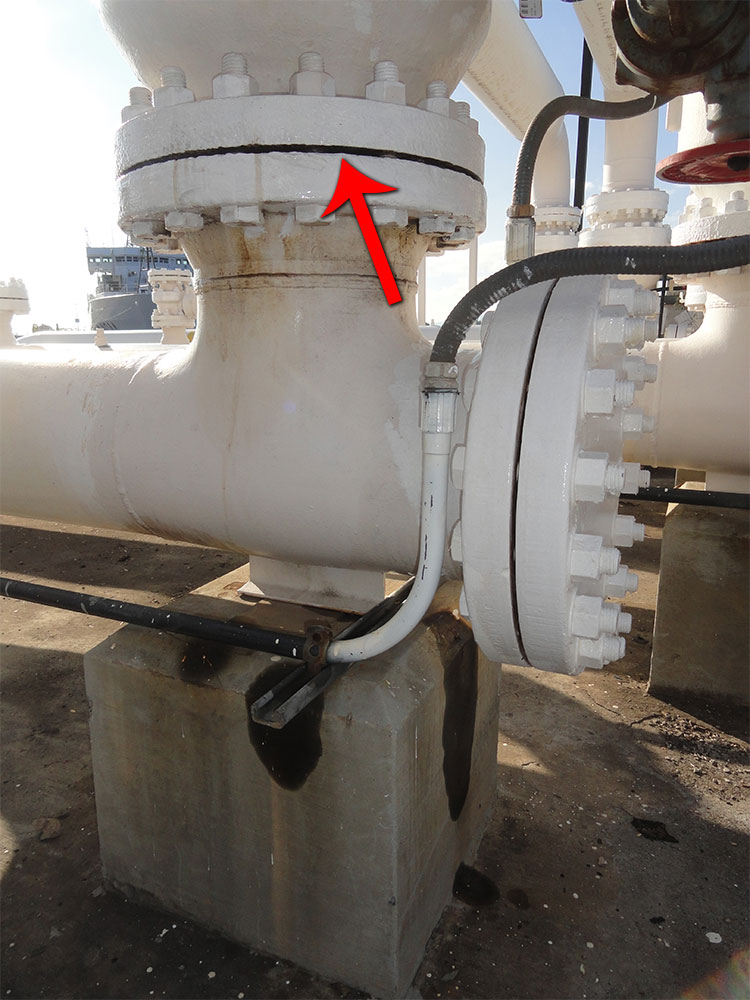
Leaking flange was discovered during a hydrotest attempt resulting in a failure.
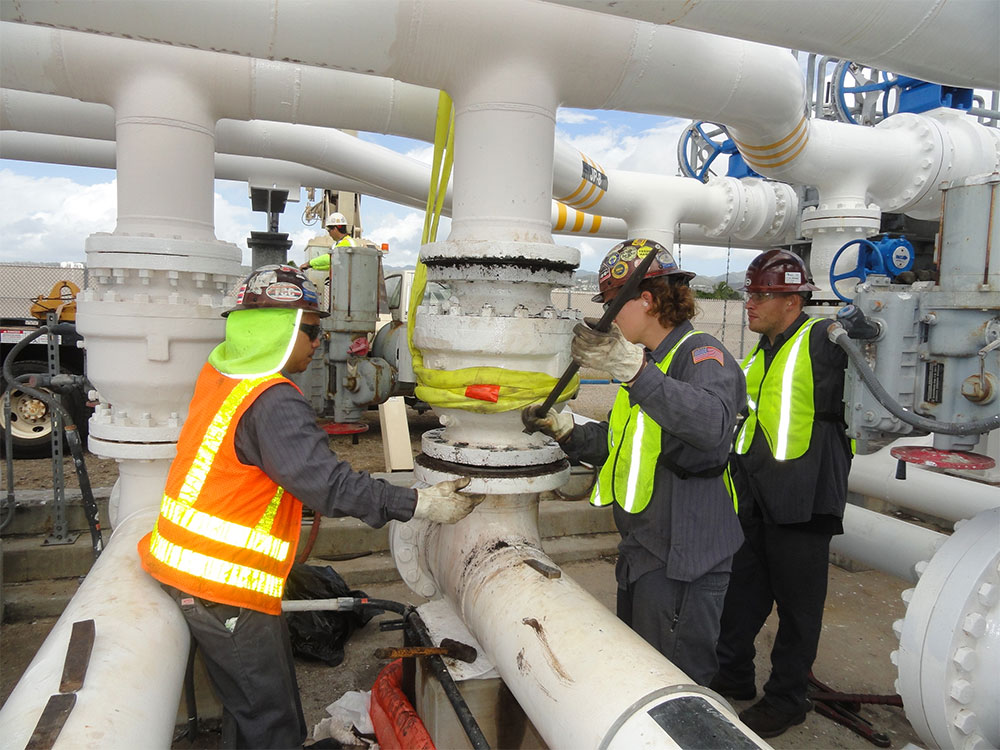
Valve was removed and severe flange degradation and corrosion was found.
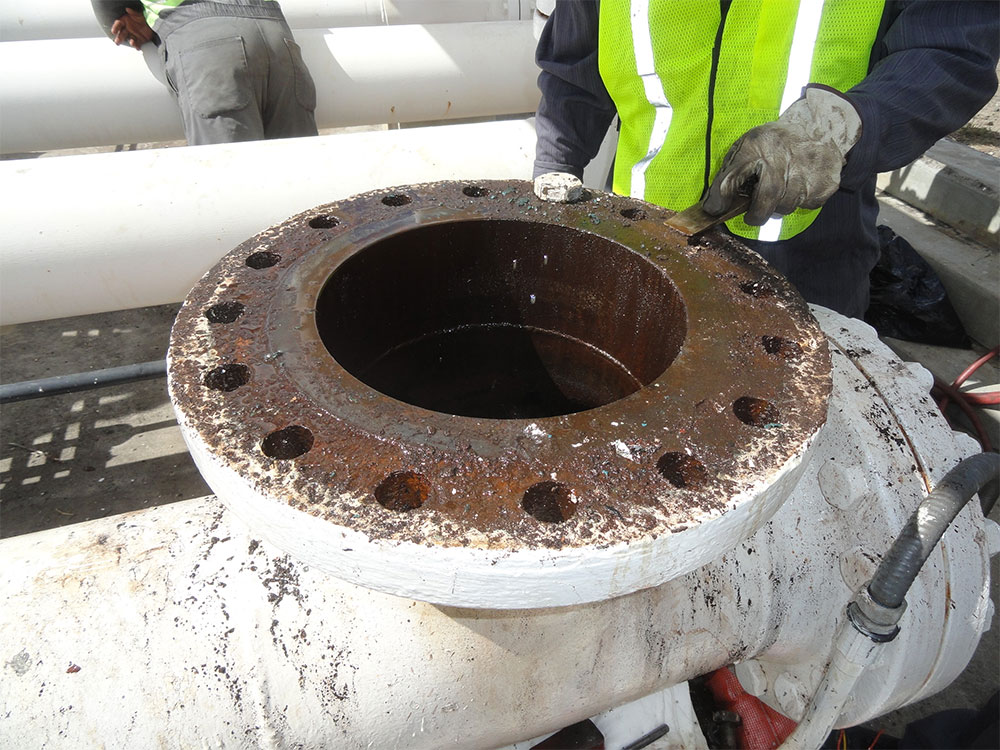
Corrosion and pitting found on the flange face contributed to the leak.
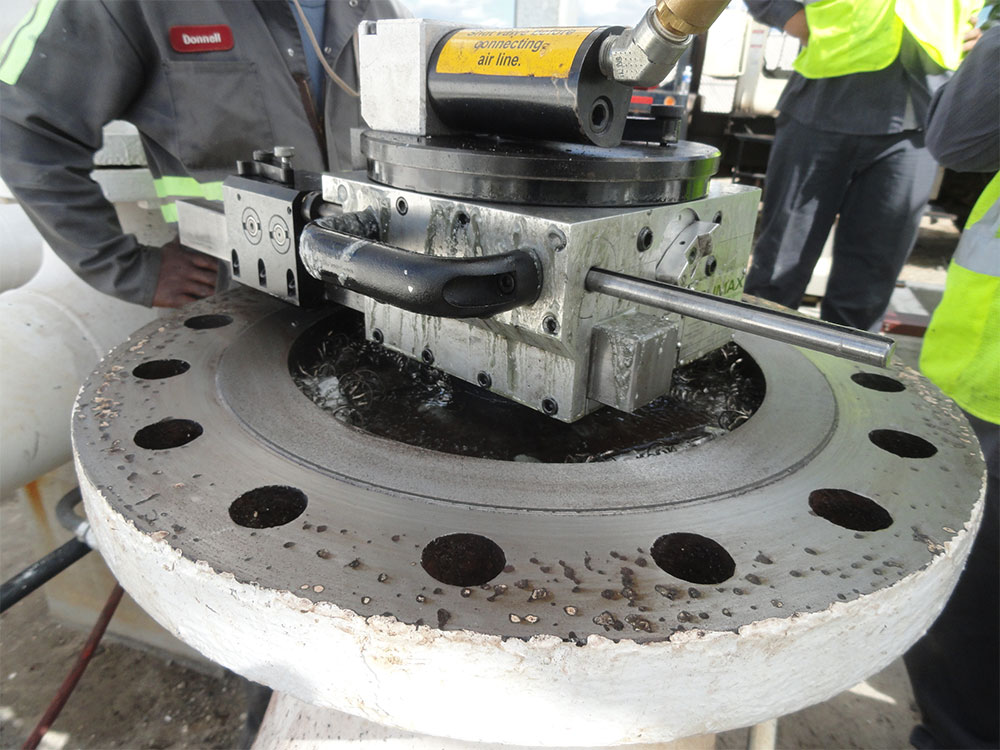
The flange was refaced and the valve reinstalled, then was successfully re-tested.
Other Examples of Active Leaking During Hydrotesting
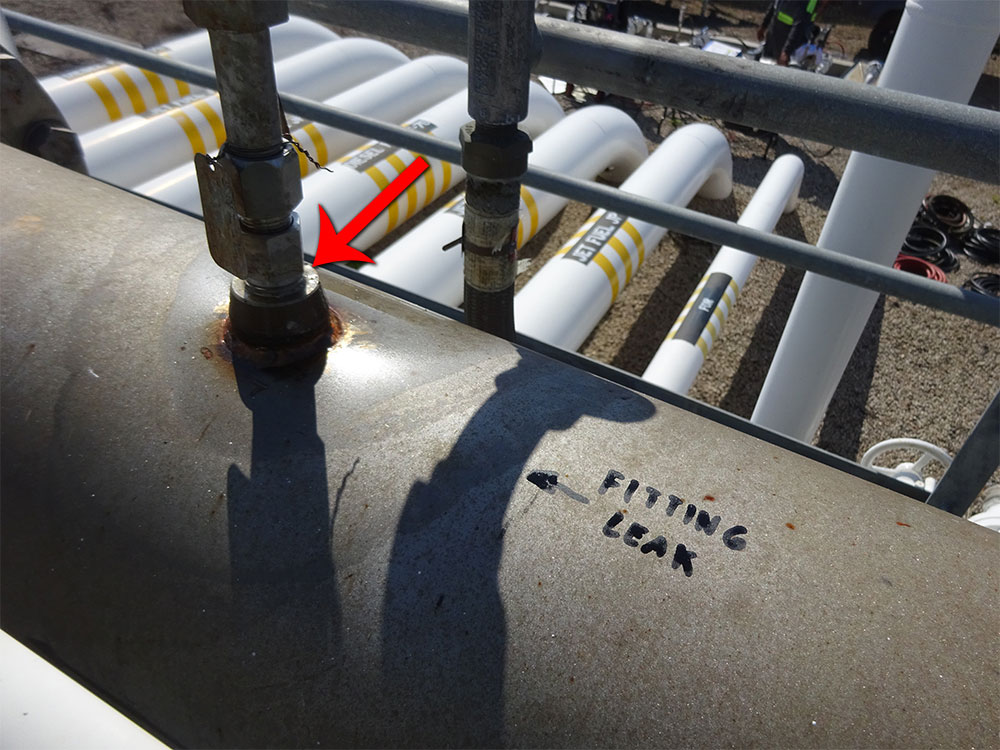
Typical threaded fitting leak due to lack of thread sealant.
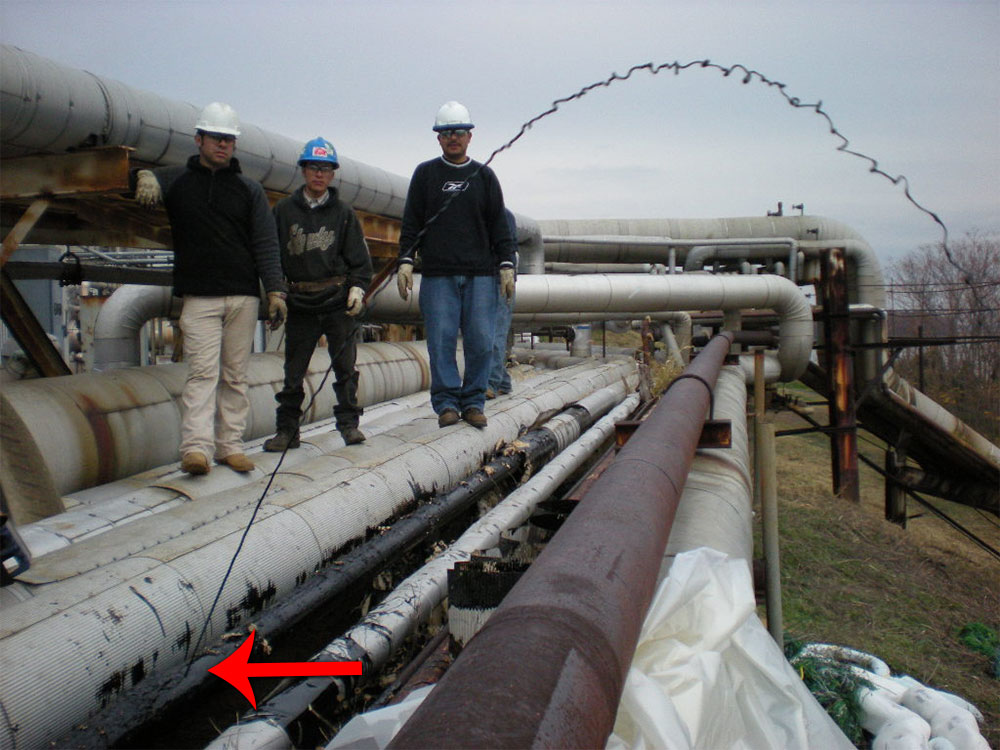
Pencil size hole failed during pressurization of an insulated heavy fuel oil pipeline due to corrosion.
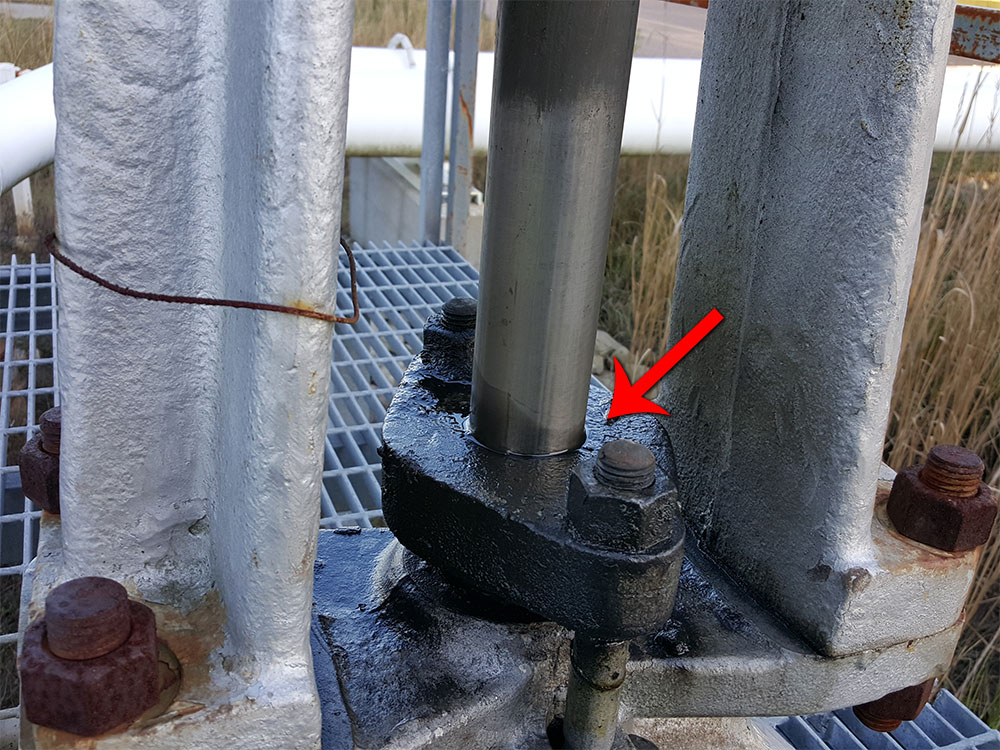
Gate valve packing leaking under test pressure.
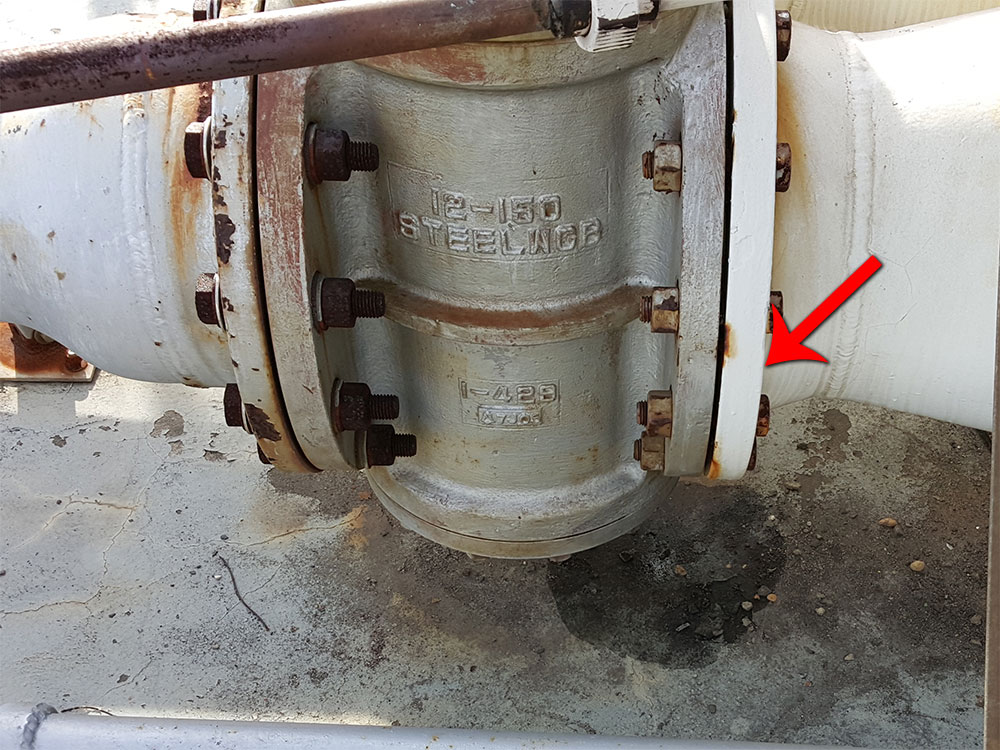
Flange leaking under test pressure requiring simple re-tightening of the bolts.
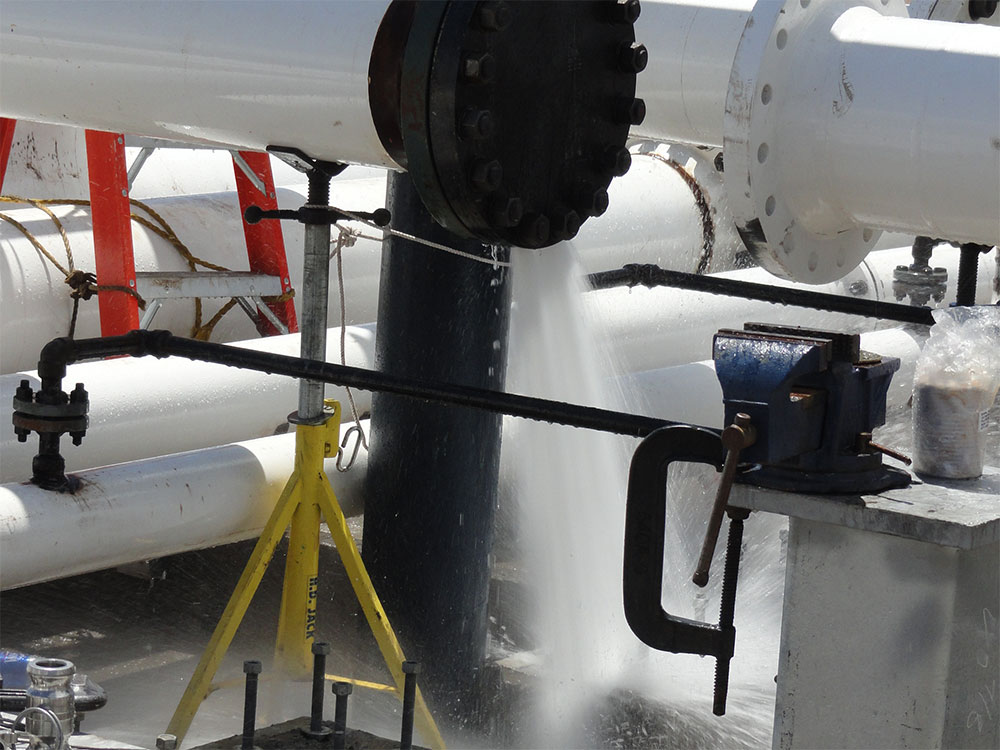
A 300-lb. class flange failed during a commissioning hydrotest with water.
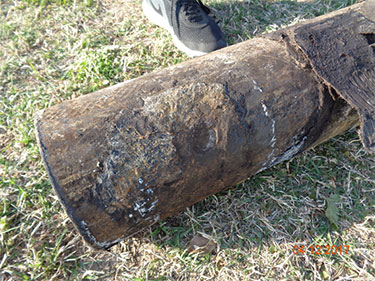
Pipeline failure found by hydrostatic pressure testing.
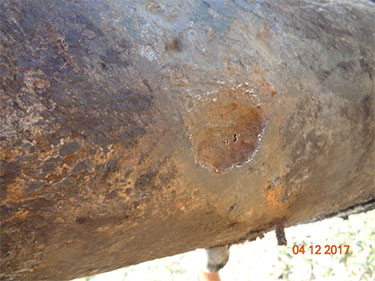
Pipeline failure found by hydrostatic pressure testing.
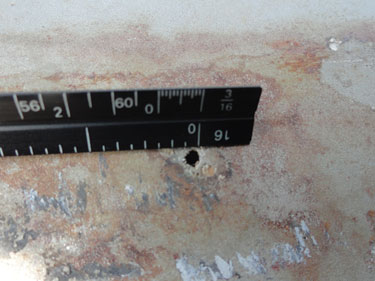
Pinhole in SS AG piping found during commissioning testing with water @ 225 psi.
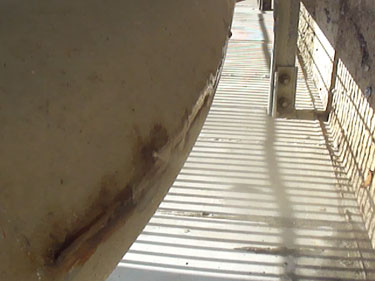
Pinhole in SS AG piping found during commissioning testing with water @ 225 psi.
